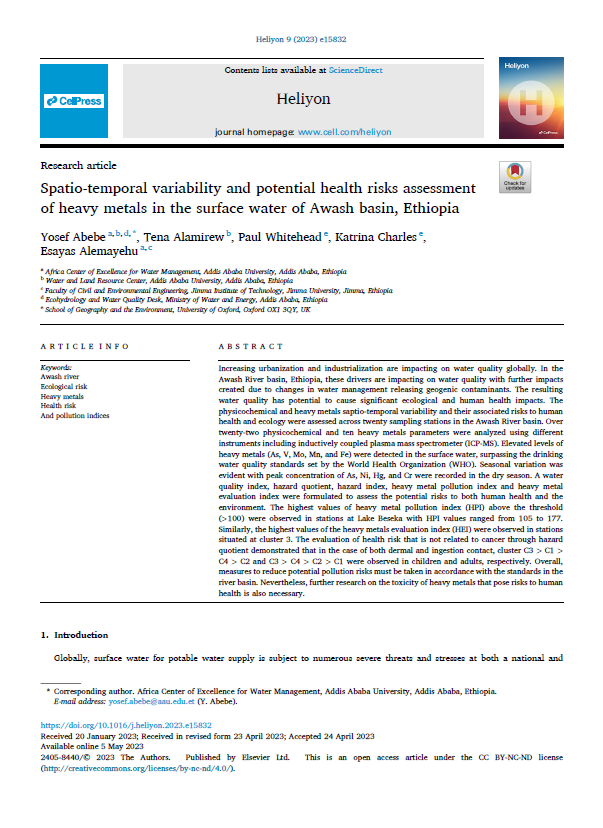Authors: Yosef Abebe, Tena Alamirew, Paul Whitehead, Katrina Charles, Esayas Alemayehu
Increasing urbanization and industrialization are impacting on water quality globally. In the Awash River basin, Ethiopia, these drivers are impacting on water quality with further impacts created due to changes in water management releasing geogenic contaminants. The resulting water quality has potential to cause significant ecological and human health impacts. The physicochemical and heavy metals spatio-temporal variability and their associated risks to human health and ecology were assessed across twenty sampling stations in the Awash River basin. Over twenty-two physicochemical and ten heavy metals parameters were analyzed using different instruments including inductively coupled plasma mass spectrometer (ICP-MS). Elevated levels of heavy metals (As, V, Mo, Mn, and Fe) were detected in the surface water, surpassing the drinking water quality standards set by the World Health Organization (WHO). Seasonal variation was evident with peak concentration of As, Ni, Hg, and Cr were recorded in the dry season. A water quality index, hazard quotient, hazard index, heavy metal pollution index and heavy metal evaluation index were formulated to assess the potential risks to both human health and the environment. The highest values of heavy metal pollution index (HPI) above the threshold (>100) were observed in stations at Lake Beseka with HPI values ranged from 105 to 177. Similarly, the highest values of the heavy metals evaluation index (HEI) were observed in stations situated at cluster 3. The evaluation of health risk that is not related to cancer through hazard quotient demonstrated that in the case of both dermal and ingestion contact, cluster C3 > C1 > C4 > C2 and C3 > C4 > C2 > C1 were observed in children and adults, respectively. Overall, measures to reduce potential pollution risks must be taken in accordance with the standards in the river basin. Nevertheless, further research on the toxicity of heavy metals that pose risks to human health is also necessary.

